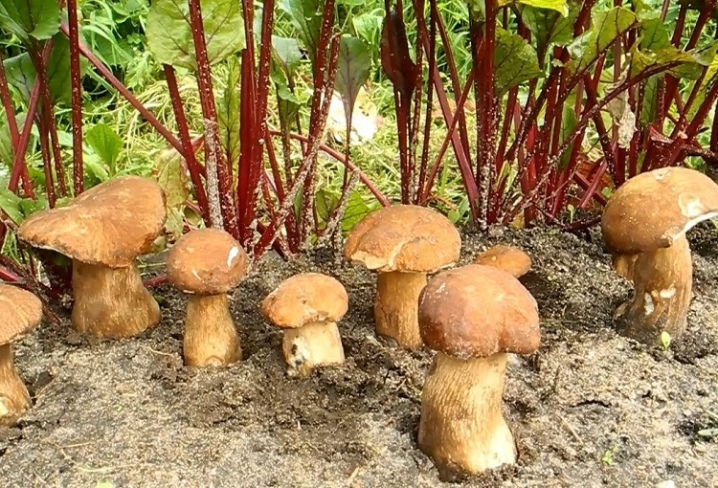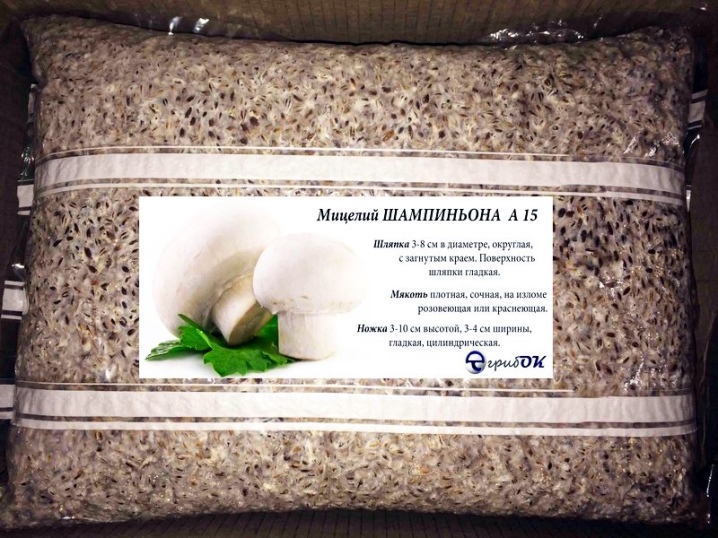How to grow mushrooms in your garden?

Growing mushrooms on a garden plot is a fascinating and rather promising activity, which is not only a hobby for many summer residents, but also a source of additional income. In the article, we will consider the basic rules and features of growing mushrooms in the backyard, talk about what types of mushrooms you can grow on your site or summer cottage.

Growing features
The cultivation of mushrooms has almost nothing to do with the cultivation of traditional agricultural crops. This is largely due to the fact that mushrooms have a unique structure that distinguishes them from green plants. In the cells and tissues of fungi, unlike most plants, completely different processes take place, due to which they almost do not need sunlight, but at the same time they are very fond of heat, high humidity of the air and soil (substrate).
Thus, one of the most important nuances of growing mushrooms in a garden plot is to create conditions for them that are as close as possible to their natural growing environment. This involves meeting requirements such as:
- the correct choice and preparation of a landing site;
- maintaining optimal illumination, air and soil moisture in the place of mushroom planting.

Mushrooms should be grown in shaded areas out of direct sunlight. The most suitable in this respect are near-trunk spaces under deciduous or coniferous trees (mushrooms are planted at a distance of at least 0.5 m from the trunk). It is important to note that forest mushrooms can only be grown under forest trees, but in no case under fruit crops.
Many summer residents grow mushrooms in the shade of a house or outbuildings - for example, behind a barn or a bathhouse. Beforehand, the place for planting mushrooms is cleared of household and / or plant debris and comfortable ways of approaching it are arranged. The soil at the planting site should be loose, moist (but not waterlogged!), Containing a large amount of organic matter.
To improve the structure of the soil, the planting site is dug onto a shovel bayonet, after which compost, rotted foliage, tree bark and sawdust are added.


Another important nuance that requires the attention of a novice mushroom grower is the correct choice of planting material. For growing mushrooms, store-bought mycelium, mycelium brought from the forest, or seedlings are usually used.
In specialized stores, you can find ready-made mycelium of almost all known varieties of mushrooms. Before buying, experienced mushroom growers recommend that you carefully read the instructions attached to the planting material. This recommendation is due to the fact that the cultivation of certain types of mushrooms often requires specific conditions (for example, planting mycelium strictly near conifers or, on the contrary, deciduous trees), which are not always acceptable for the owner of a summer cottage.
Planting a mycelium brought from the forest is one of the simplest and most effective ways to quickly equip a mushroom plot on the site. In this case, the owner of the site has an objective opportunity to get a harvest from mushrooms adapted to the climatic and weather conditions of their region.
At the same time, experienced mushroom growers do not recommend using this method, due to its illegality (with the exception of the use of myceliums brought from deforested forests).



In some cases, it is possible to grow a mushroom plot on a personal plot through seedlings. This requires:
- chop fresh mushroom caps and fill them with water for a day;
- prepare a planting site under a tree growing on the site (loosen the ground, add compost);
- pour the resulting infusion onto the prepared place and cover it with rotted foliage.
In the future, it is recommended to water the equipped plot with infusion prepared in the above way from any crushed mushroom residues - hats, legs, fragments of myceliums. This will create the most comfortable environment in the soil, thereby accelerating the germination of mushroom seedlings.
Planting and cultivation of mushrooms in the personal plot is carried out during the entire summer season - from May to September. Arrangement of plots is done in the evening or in cloudy, damp weather. Throughout the growing season, carefully monitor that the soil on the plots does not dry out. To this end, they are regularly watered, after which they are mulched with rotted foliage.
For the winter, plots are insulated with moss, foliage or spruce branches. In spring, biostimulants are introduced into the soil, activating the growth of fungi.


Planting porcini mushroom
For the arrangement of the plot, a store-bought mycelium or infusion made from forest porcini mushrooms is used. Before planting the mycelium, they first clear and dig a place under the trees in the garden (under a birch, oak), after which they remove the top layer of soil 10-15 cm thick and put peat or compost instead. Then spread the mycelium in a checkerboard pattern at a distance of 30 cm between the fragments. After laying, the mycelium is carefully watered (water consumption - 2-3 buckets under one tree) and sprinkled with the removed layer of soil. Additionally, the plot is mulched with straw or rotted foliage - this will prevent rapid evaporation of moisture from the soil.
Infusion for breeding porcini mushrooms is prepared as follows:
- chop the caps and legs of the porcini mushrooms until a homogeneous puree;
- pour the resulting mass with water, mix thoroughly;
- filter the infusion through cheesecloth.
To process the prepared plot, an aqueous infusion enriched with white fungus spores is used. The mushroom mass is allowed to be used again to prepare an infusion with mushroom spores. A plot of land under the tree is spilled with infusion (after removing the top layer of soil and laying compost), after which the removed soil is poured on top.


Rules for growing champignons
For growing champignons, both ready-made store-bought mycelium and an infusion containing their spores are used. The easiest way to get mycelium at home involves the use of various fragments of fresh and mature mushrooms. It is allowed to use whole mushrooms. They are laid out in a previously prepared place and covered with rotted foliage, compost, branches, old boards in order to preserve the moisture reserve in the soil.
One of the important rules for growing mushrooms is competent preparation and arrangement of the plot. Ordinary soil is not suitable for these mushrooms, so an airy substrate rich in organic matter is used to grow them. The best way for growing mushrooms is composted rotted manure, which is mixed with sawdust or straw.
The result is a loose nutritional mixture containing a large amount of nitrogen and other important macro- and micronutrients.

The substrate is placed in pits 25-30 cm deep, on the bottom of which drainage is preliminarily laid. A mycelium is laid out on top of the substrate, sprinkled with water, a mixture of garden soil (peat) and chalk is poured on top in a ratio of 4: 1. Chalk is added without fail to neutralize the acidity of the nutrient mixture. Within 3 weeks, the mycelium grows inside the substrate.
Another important rule that must be observed when growing mushrooms is regular, abundant spraying. They are carried out every day, after which the mushroom plot is covered with a damp cloth. In the spring, at the beginning of the growing season and before wintering, the mushrooms are fed with a solution of horse manure (1 part of manure and 5 parts of water) with the addition of ammonium nitrate (100 g per 10 l of solution).

How to plant other forest mushrooms?
Many mushroom growers prefer to grow oyster mushrooms and mushrooms in their gardens, using old stumps instead of a substrate. To grow wild mushrooms in this way, you will need:
- relatively fresh and wet log without visible signs of destruction (dry logs should be soaked in water beforehand);
- mycelium;
- drill.
Several holes with a diameter of 1-10 cm and a depth of up to 10 cm are drilled in the end part of the log. Then the mycelium is broken into pieces, which are placed in the holes. Next, the holes are clogged with paper wads, the log is moistened, wrapped in foil and sent to a dark room (barn, basement). An important condition is maintaining a constant moisture content of the log at 80%, since mycelium will not develop in dry wood. After the appearance of young mushroom shoots (6-10 weeks after replanting the mycelium), the logs are transferred to the garden and placed in the darkest corners to a permanent place.


Useful Tips
In order for the mycelium to take root faster, it is recommended to periodically feed it with sweet water (10 g of sugar per 10 liters of water). The plots are carefully spilled with the solution, trying to prevent waterlogging of the soil.
In dry weather, the plots with mushrooms are watered about 3 times a week. In rainy and cloudy weather, the frequency of watering is reduced. Do not allow the soil to dry out on plots with mushrooms - otherwise, the mycelium may die.
It should be remembered that some types of mushrooms require proximity to certain trees, in the absence of which all breeding efforts will be in vain. So, boletus and oak trees will grow only under birches; chanterelles, Polish mushrooms, boletus, goats and porcini pine mushrooms - under the pines.
Under the oaks growing on the site, porcini oak mushrooms, speckled, yellow and olive-brown oak trees take root perfectly, and black milk mushrooms and aspen mushrooms under the poplars.

You can find out how to independently awaken the spores of porcini mushrooms from the video below.













The comment was sent successfully.